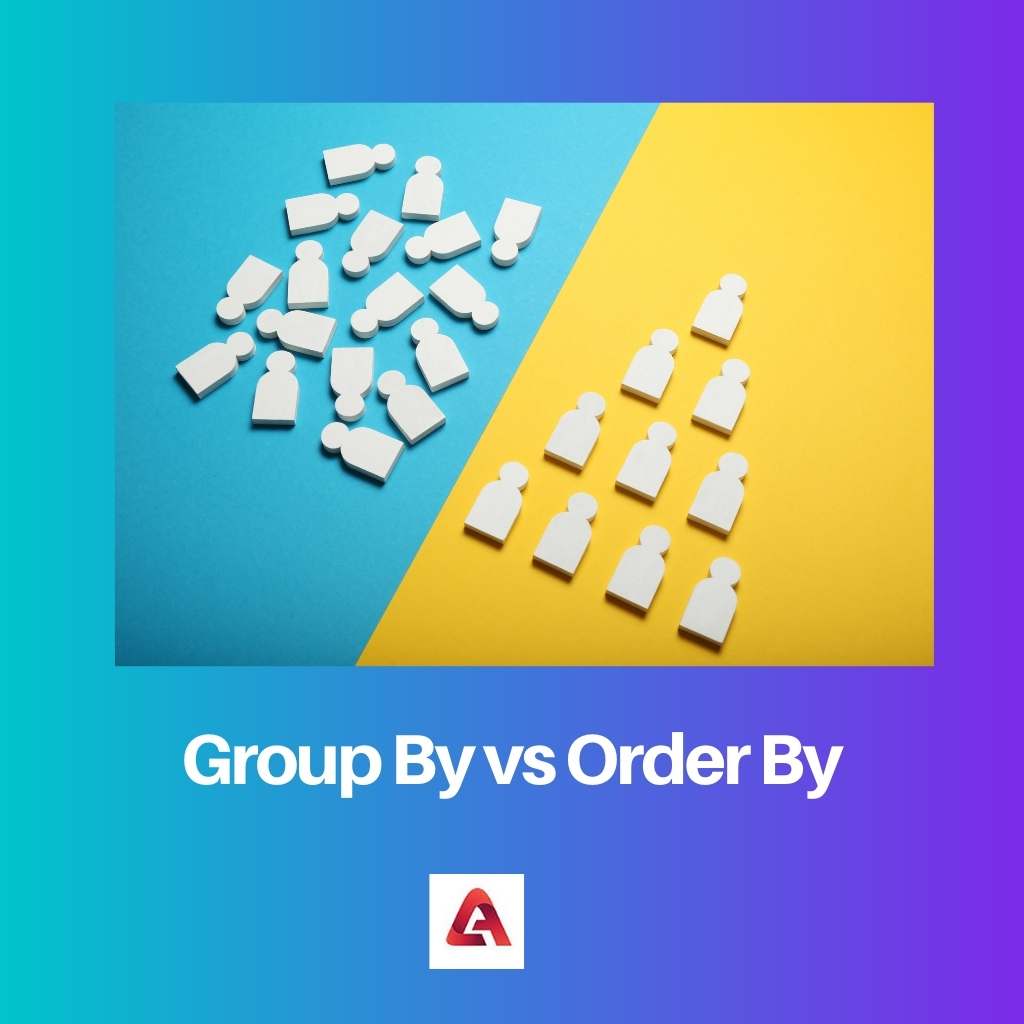Group By and Order By are known as statements or clauses of the SQL system. They function independently and hence are not interlinked while in use. They have quite a similar function however, their process is quite different.
They are essential features of a database. Both focus on sorting the values, but their sorting type varies. People who do not have enough knowledge regarding this process might be confused about which one to apply.
Hence it is necessary to find out their unique features and also how they work. This shall eventually figure out how to use them in what given conditions.
Key Takeaways
- GROUP BY aggregates data based on specified columns, while ORDER BY sorts data in ascending or descending order.
- GROUP BY uses aggregate functions like COUNT, SUM, and AVG, while ORDER BY does not require aggregate functions.
- GROUP BY can reduce the number of rows in a result set, while ORDER BY only rearranges the rows.
Group By vs Order By
The difference between Group By and Order By is that Group By is used to group the rows with the same values. Order By is used to arrange the values in an ascending or descending order.
Their function is similar however, their process of arranging data is very different. In other words, we can say Group by is used for creating specific combinations depending upon the values.
Whereas Order By is used to list a number of values in a given column.

Group By is not just used to display values in groups. In addition to that, it helps to analyze the given data in particular groups. It is placed before the Order By clause.
When we use this command, it is necessary to use the aggregate function. Its position is before the Order By and after the Where statement.
On the other hand, Order By is comparatively simpler. When we use this command, it is not necessary to use the aggregate function. Its position is always after the Group By statement.
It reads the value and measures them to sort. The sorting is based on the attribute value.
Comparison Table
| Parameters of Comparison | Group By | Order By |
|---|---|---|
| Aim | Group By is used to group the rows with the same values. | Order By is used to arrange the values in an ascending or descending order. |
| Sorting | The sorting is done based on similarities. | The sorting is done based on values. |
| Position | Group By is used before the Order By clause. | Order By is used after the Group By clause. |
| Permission | It is allowed in CREATE VIEW statement. | It is not allowed in CREATE VIEW statement. |
| Presentation | It deals with the presentation of rows. | It deals with the presentation of columns. |
What is Group By?
Group By has some specific syntax that is very important to remember. The statement is written in block form. The group by clause must follow the conditions for the Where clause.
It collaborates with the Select statement to form an identical form of a database.
Also, it precedes the Order of the statement. Aggregate functions are used with Group By statements. It includes MAX(), SUM(), AVG(), etc. This helps in binding similar components into single or multi-columns.
An example can be very helpful. For example, let’s say, “Calculate the number of customers in each country.” the SQL number list for customers of each country can be grouped in the following manner.
SELECT COUNT(CustomerID)
From Customers
GROUP BY Country;
It has a very user-friendly command. Having a condition in the syntax is optional. However, any error in it might lead to wrong results or invalid output.
It returns a single row for every grouped item, and the queries containing groups are termed group queries.
What is Order By?
To be precise, Order By is used to arrange a set of results in ascending or descending manner. The presentation here takes place through the formation of columns. There are rules in syntax that need to be kept in mind.
First, it is a must to separate the columns by a comma. Second, DESC can be applied only to the preceding column.
For the arrangements, certain keywords are specified. The keyword ASC is used to sort the values in ascending order. Whereas the keyword CESC is used to arrange the values in descending order. However, by default, it gets sorted in ascending order at first.
It also has a feature of multiple columns. It means we can sort the data in multiple columns as well. This is useful in cases where we have similar values. For example, we may organize the rows, considering the dates.
Comments can be added in Order By. Again, it is optional. However, it makes understanding easier and also helps us to present our idea in a better way. They do not affect the coding since they are not considered under the SQL code.
Main Differences Between Group By and Order By
- The main difference between Group By and Order By is their way of arranging. Group by is used for creating specific combinations depending upon the values. In contrast, Order By is used to list several values in a given column.
- Next comes the presentation. Group By deals with the presentation of rows. Order By deals with the presentation of columns.
- Coming to permission and allowance, there is a unique difference between the two. Group By is allowed in CREATE VIEW statement. On the other hand, Order By is not allowed in CREATE VIEW statement.
- In Group By, sorting is done based on similarities. On the other hand, in Order By, sorting is done based on values.
- Their position is very important. Group By is used before the Order By clause. Order By is used after the Group By clause.



